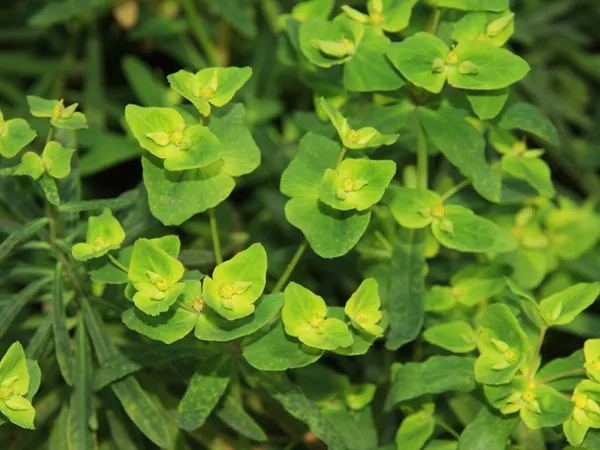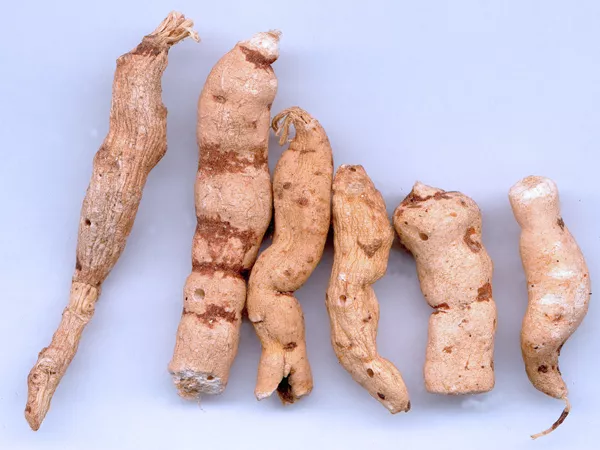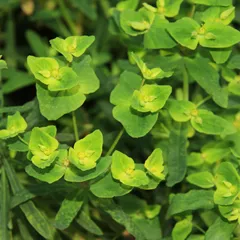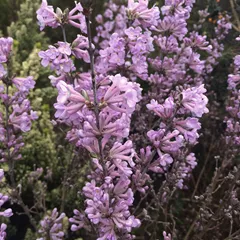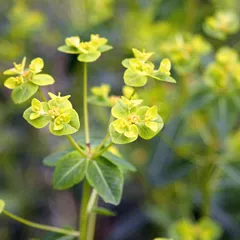Gan Sui
Gan Sui
English: Kansui roots
Chinese: 甘遂
Parts used: The dried root
TCM category: Cathartic herbs that drain downward
TCM nature: Cold
TCM taste(s): Bitter
Organ affinity: Spleen Kidney Large intestine Lung
Scientific name: Euphorbia kansui
Use of Gan Sui (kansui roots) in TCM
Please note that you should never self-prescribe TCM ingredients. A TCM ingredient is almost never eaten on its own but as part of a formula containing several ingredients that act together. Please consult a professional TCM practitioner, they will be best able to guide you.
Preparation: Dig out the root, peel off the skin, and dry it
Dosage: 1 - 3 grams in decoction, 0.5 - 1 grams as a powder
Main actions according to TCM*: Relieves water retention and congestion of Fluids. Cools swellings and reduces inflammation when applied topically. Strong purgative, driving water and Food Stagnation out though the stool.
Primary conditions or symptoms for which Gan Sui may be prescribed by TCM doctors*: Ascites Edema Sores Abcesses Constipation
Contraindications*: This herb is traditionally considered incompatible with Liquorice (Gan cao). This herb should not be used by pregnant women nor by those that are Deficient
Common TCM formulas in which Gan Sui is used*
Shi Zao Tang
Source date: 220 AD
Number of ingredients: 4 herbs
Formula key actions: Purges and drives out Phlegm-Fluids.
Conditions targeted*: Pericardial and pleural effusionsPneumonia and others
Gan Sui is a king ingredient in Shi Zao Tang. Like the name indicates, it means it has more power than other ingredients in the formula.
In Shi Zao Tang, Gan Sui expels Fluids and Dampness from the Channels and collaterals.
Zhou Che Wan
Source date: 992 AD
Number of ingredients: 10 herbs
Formula key actions: Promotes Qi movement. Harshly drives out Water and Heat Stagnation.
Conditions targeted*: SchistosomiasisUremia and others
Gan Sui is a king ingredient in Zhou Che Wan. Like the name indicates, it means it has more power than other ingredients in the formula.
In Zhou Che Wan, Gan Sui is a harsh expellants that purge water from the abdomen and chest.
Key TCM concepts behind Gan Sui's properties
In Traditional Chinese Medicine (TCM), Gan Sui belongs to the 'Cathartic herbs that drain downward' category. The herbs in this category are those whose main purpose is to treat constipation. They're called 'cathartic' because they have an especially strong effect and should only be used for severe intestinal blockage or gastrointestinal swelling.
Furthermore Gan Sui is Cold in nature. This means that Gan Sui typically helps people who have too much 'Heat' in their body. Balance between Yin and Yang is a key health concept in TCM. Those who have too much Heat in their body are said to either have a Yang Excess (because Yang is Hot in nature) or a Yin deficiency (Yin is Cold in Nature). Depending on your condition Gan Sui can help restore a harmonious balance between Yin and Yang.
Gan Sui also tastes Bitter. The so-called 'Five Phases' theory in Chinese Medicine states that the taste of TCM ingredients is a key determinant of their action in the body. Bitter ingredients like Gan Sui tends to have a cleansing action on the body by clearing Heat, drying Dampness and promoting elimination via urination or bowel movements.
The tastes of ingredients in TCM also determine what Organs and Meridians they target. As such Gan Sui is thought to target the Spleen, the Kidney, the Large intestine and the Lung. In TCM the Spleen assists with digestion, Blood coagulation and Fluids metabolism in the body. The Kidneys do not only regulate the urinary system but also play a key role in the reproductive system and the growth and aging process of the body. The Large Intestine receives the "impure" parts of the digested food from the Small Intestine, absorbs the remaining fluids and excrete the remainder as feces. In addition to performing respiration, the Lungs are thought in TCM to be a key part of the production chain for Qi and the Body Fluids that nourish the body.

